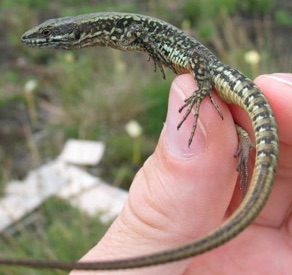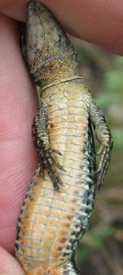Determining why polymorphism is maintained within populations can tell us about the selective forces that shape morphology and behavior. The European common lizard, Lacerta vivipara, exhibits variation in coloration, including orange, yellow, and white morphs. In collaboration with colleagues in the U.S. and France, I helped collect life history data on L. vivipara to understand how the color morphs differ from one another and to investigate what factors are likely to promote the persistence of multiple morphs. We found that L. vivipara morphs exhibited changes in frequency over time consistent with an evolutionary analogue of a rock-paper-scissors game. The morphs also showed frequency-dependent fitness, as expected in a rock-paper-scissors game. This data led to the development of a new series of game-theoretical models to explain the maintenance of polymorphism.
Publications
Sinervo B, Heulin B, Surget-Groba Y, Clobert J, Miles DB, Corl A, Chaine A, and Davis A. 2007. Models of density-dependent genic selection and a new rock-paper-scissors social system. The American Naturalist. 170: 663-680. [link]
(See a news article about this research at: http://news.ucsc.edu/2007/10/1610.html)



